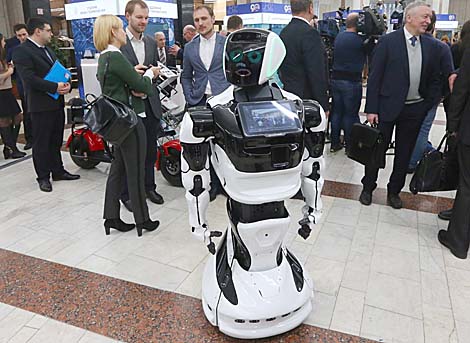Opinions & Interviews
Belarus’ Academy of Sciences expects commercial effect from all R&D products

MINSK, 16 November (BelTA) – All this year’s R&D products will be slated for manufacturing, BelTA learned from Chairman of the Presidium of the National Academy of Sciences of Belarus Vladimir Gusakov on 16 November.
 The official said: “Full assimilation of R&D results is the most important task. This year we will not have unwanted results. All our products will be slated for manufacturing. We’ve established cooperation with a number of industrial and agricultural enterprises and other ones and will offer them our products.” Profit from R&D efforts of the Academy of Sciences is estimated at Br5-100 per every invested ruble.
The official said: “Full assimilation of R&D results is the most important task. This year we will not have unwanted results. All our products will be slated for manufacturing. We’ve established cooperation with a number of industrial and agricultural enterprises and other ones and will offer them our products.” Profit from R&D efforts of the Academy of Sciences is estimated at Br5-100 per every invested ruble.
 According to the source, Belarusian science keeps in touch with the world trends. “We’ve secured accomplishments in space industry. We are about to finish designing an electric car. We’ve created a supercomputer with the ability to make 20 trillion operations per second. The production of 47 medications on par with imports has begun this year. Major accomplishments have been secured in the area of biotechnology,” said Vladimir Gusakov.
According to the source, Belarusian science keeps in touch with the world trends. “We’ve secured accomplishments in space industry. We are about to finish designing an electric car. We’ve created a supercomputer with the ability to make 20 trillion operations per second. The production of 47 medications on par with imports has begun this year. Major accomplishments have been secured in the area of biotechnology,” said Vladimir Gusakov.
 In his words, the prestige of scientific professions has increased noticeably. “Young people are glad to become one of us. The average age is 47 years. We welcome 320-350 most talented young scientists every year,” noted Vladimir Gusakov.
In his words, the prestige of scientific professions has increased noticeably. “Young people are glad to become one of us. The average age is 47 years. We welcome 320-350 most talented young scientists every year,” noted Vladimir Gusakov.
 The National Academy of Sciences of Belarus celebrated its 90 anniversary on 16 November. A solemn meeting was arranged to award the country’s best scientists. Prominent scientists from the CIS states, leading foreign academies of sciences, internationally recognized R&D centers have come to Minsk for the event. An exhibition of R&D products featuring over 300 new products and technologies of the National Academy of Sciences of Belarus has been arranged. The exhibition is subdivided into seven clusters focusing on space technology, information technology, biotechnology, nanotechnology, new medications, and agrarian science achievements.
The National Academy of Sciences of Belarus celebrated its 90 anniversary on 16 November. A solemn meeting was arranged to award the country’s best scientists. Prominent scientists from the CIS states, leading foreign academies of sciences, internationally recognized R&D centers have come to Minsk for the event. An exhibition of R&D products featuring over 300 new products and technologies of the National Academy of Sciences of Belarus has been arranged. The exhibition is subdivided into seven clusters focusing on space technology, information technology, biotechnology, nanotechnology, new medications, and agrarian science achievements.
 At present the National Academy of Sciences of Belarus runs over 100 organizations, which employ over 15,000 people. The academy employs 427 doctors of science and 1,707 candidates of science. Researchers under 29 represent nearly 30% of the academy’s workforce.
At present the National Academy of Sciences of Belarus runs over 100 organizations, which employ over 15,000 people. The academy employs 427 doctors of science and 1,707 candidates of science. Researchers under 29 represent nearly 30% of the academy’s workforce.







 print version
print version make home page
make home page add to bookmarks
add to bookmarks

